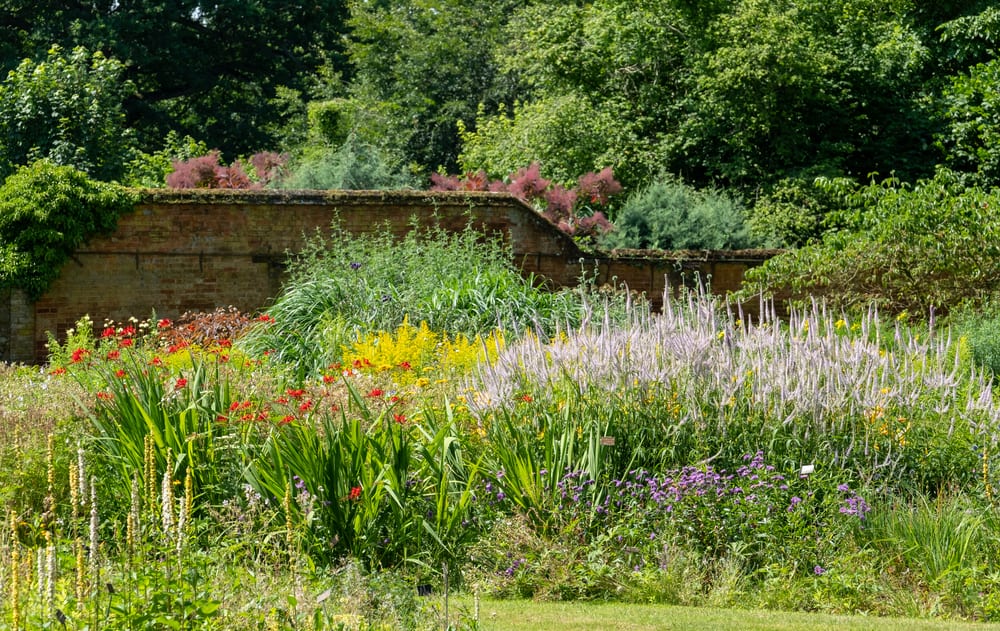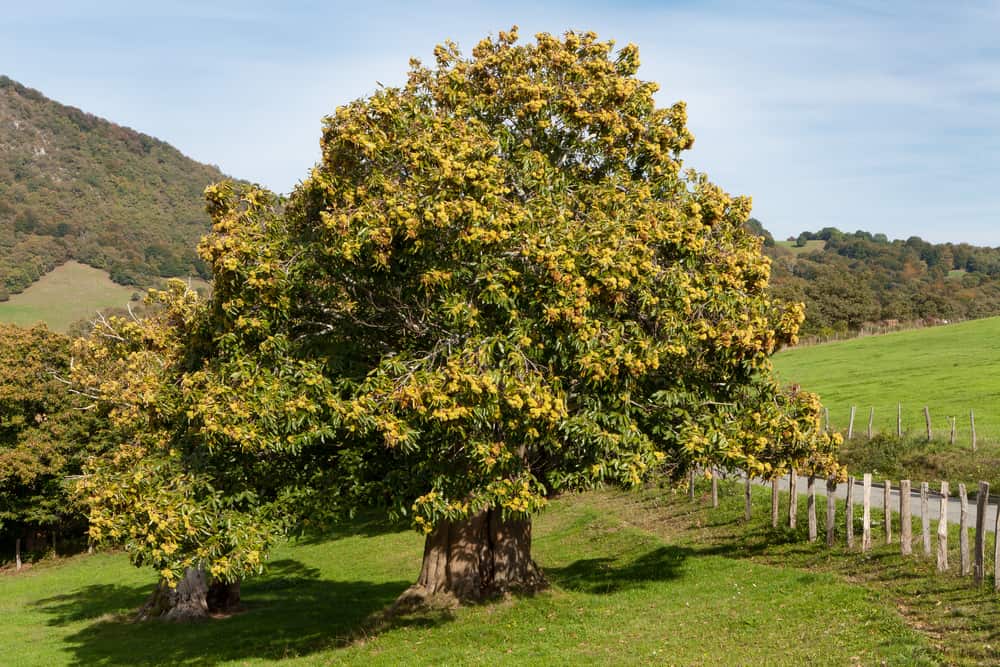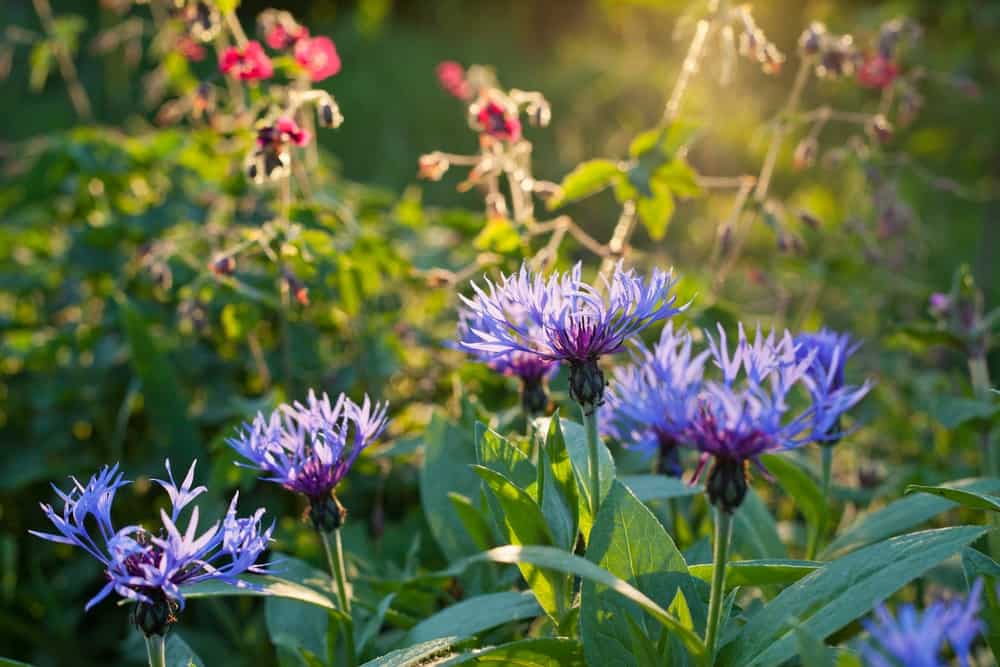
We may earn a commission if you purchase something through one of our links. Commissions have no bearing on our editorial content. Read the complete disclosure.
The goal of naturalistic planting is to build a garden that simulates the wild look of nature while still maintaining a confined setting. You allow plants to grow freely and mimic their natural development instead of forcing them to be flawless and having a tight structure.
After reading this article, you’ll want to give this design trend a try if you haven’t heard of it.
So, how do you use it on your homestead? Let’s discuss how to build a beautiful, natural-looking garden.

What Is Naturalistic Planting Design?

We have altered how we think about and plan our gardens after reading Nigel Dunnett’s book “Naturalistic Planting Design the Essential Guide: How to Build High-Impact, Low-Input Gardens.”
It’s all about designing a garden that is more in tune with nature than our contemporary gardens, and it’s all about creating a natural-looking and behaving one. Everything should serve a purpose that is both beneficial and integrated.
Imagine naturalistic planting as a traditional piece of art. There should be layers and the components must be in tune with their surroundings.
With this kind of gardening, you won’t use any formal-looking plants. In more formal-style gardens, sheared boxwoods and upright junipers are better off.
When using this approach, you must carefully select which plants to include in your garden, as would be predicted, but it pays off in the long run with less upkeep and happier animals.
How Naturalistic Planting Design Is Different

Naturalistic planting design is more intentional in terms of its impact on the environment and how plants interact with one another than conventional planting techniques. Everything in your garden must be taken into account.
More than 100% of the space you have is used in naturalistic design. Are you perplexed? Plants are 3D, but the earth is 2D. If you think about it. Within the same footprint, you may have a ground cover, shrub, and tree.
The primary “matrix” plants, which take up the most area, are first to be planted. Groundcovers and grasses are common examples. Next, you include your main plants to create a visual impact. To achieve variety in heights and colors throughout the seasons, you then add secondary plants.
Rather than having well-defined areas, it’s a lot like gardening in layers.
To make their garden appear formal and traditional, many people strive to enhance it. Yet, as well as being beneficial for animals and the environment, this naturalistic design approach gives you more freedom and fun in your garden.
Primary Plant Options for Your Naturalistic Garden
You’ll need to understand which plants are appropriate for naturalistic planting designs before transforming your garden area. Of course, where you live will determine a lot of what you plant. However, here are some popular options for your main plants:
1. Bergamot

The gorgeous foliage and unusual blooms of Monarda didyma are easily visible. Bergamot has gorgeous pink blossoms and deep green leaves that complement any yard.
Loading ad
Bergamot blooms for a long time, from early summer through early autumn, giving you the opportunity to enjoy them for many months.
Bergamots are a popular option for naturalistic planting designs because of their appearance and large leaves, which cover a lot of ground.
Bergamots may be cultivated with no issue as long as they are watered on a regular basis and receive adequate sunlight. For best results, it’s preferable to plant several clusters of bergamot.
2. Purple Loosestrife

As principal accents, this upright-growing perennial (Lythrum salicaria) is a fantastic choice. Little, thin leaves are produced by the branching stems, which can grow up to 10 feet tall. Throughout the summer, star-shaped blooms appear on the plant.
3. Pale Purple Coneflower

Native pollinators are drawn to pale purple coneflowers (Echinacea pallida) that bloom later in the summer. Their flowers are stunning, with a dark cone in the center.
If you want to grow these flowers in your garden, choose a location with damp soil and full sun.
4. Hardy Salvia

Do you prefer purple blooms over white blooms? After that, this plant will add some tranquility to your outdoor area with its Salvia nemorosa and Salvia hybrids.
Salvia blossoms are fragrant and may grow to be 40 inches tall, not only is the foliage lovely to view. They’re drought-tolerant and need full sun, so you don’t have to worry about watering them too often.
5. Garden Speedwell

Speedwells (Veronica longifolia) are another perennial worth adding to your list. These are likewise big plants that may grow to be over four feet tall.
In a naturalistic garden, their upright stems and bright petals are spectacular. In the growing season in mid-summer, you only have to deadhead the petals periodically to keep them healthy.
Other options include purple smoke trees, hostas, and spirea.
Matrix Plant Options
The majority of your garden will be made up of your matrix plants. They are the soil moisture holders and cover foragers that help keep weeds at bay.
1. Bigroot Geranium
A hardy, easy-to-care-for ground cover is bigroot geranium (Geranium macrorrhizum). For fragranced oil for perfume, potpourri, or herbal applications, you may also utilize the flowers and leaves.
2. Sedges

Sedges with grass-like leaves are a fantastic groundcover option. You can select from a variety of excellent Carex species and cultivars to fit your environment. Standing water is attractive to some, but dry soil is appealing to others.
3. Wild Strawberry
Wild strawberries (Fragaria vesca) serve as a great ground cover and food source. The fruits that do develop are very sweet, but they won’t resemble the huge berries you see at grocery shops.
4. Wild Ginger

Wild ginger (Asarum canadense) is a excellent option for shady areas if you’re looking for a great option. The plant is edible, and its root has a ginger-like flavor. Not only are the enormous, glossy leaves stunning, but so is the plant.
5. Coreopsis
Coreopsis plants (Coreopsis spp.) are a cheerful addition to the garden with their yellow, daisy-like blooms.
6. Waterleaf
A moisture-loving perennial ground cover that may be consumed is waterleaf (Hydrophyllum spp.). Lettuce is a wonderful substitute for leaves.
7. Stonecrop

Since it is so hardy and can tolerate drought while still giving a big, colorful show, Stonecrop (Sedum spp.) is a classic option.
8. Violet

Violets (Viola spp.) are ideal for shady places with a lot of color, particularly wild violets. They’re also edible, and taste delicious.
Secondary Plant Options

Your naturalistic garden may include any number of different plants. Trees, particularly fruit trees, are always a welcome sight. A nice visual component is provided by shrubs such as cane berries or blooming shrubs.
They also attract pollinators, which is a must.
Tips for Making Naturalistic Garden Designs

Plant three distinct types of plants when you’re planting. Primary and secondary plants should be mixed in to create a bulk matrix. Vertical or vase-shaped plants, as well as horizontal and round plants, should be mixed.
The most fundamental thing is to utilize the three elements and experiment with arrangement, regardless of your garden’s size. Don’t be concerned about the lack of space because the color and visual effect will compensate.
Focus on utilizing all three components in a reduced scale if the area is limited. Just concentrate on planting one section of your vast space at a time if you have a huge area.
Usage is the last thing to consider. Maybe put down gravel and stone seating areas. You’ll need to build pathways as well. Therefore, instead of distributing the plants, you can transition from one location to another.
To create a naturalistic planting design, you should also plant densely. Unless there is adequate space and no risk of overcrowding, don’t hold back on volume.
Benefits of Naturalistic Garden Design

A naturalistic garden design may help enhance the soil’s fertility by enriching the environment’s biodiversity. Having plants for all four seasons is another benefit of having a naturalistic garden design.
For spring and summer color, use perennials and self-seeding annuals, and for later in the summer, plant grasses. For winter interest, use evergreens and plants with bright bark or berries.
Naturalistic garden designs have a low maintenance rate, so all you need to do is water, replace dead plants, and deadhead.
Adopting the winter phase of gardening is part of the enjoyment of using a naturalistic approach to your garden. Trimming and keeping the dead flowers in check is sufficient to keep a clean appearance; there’s no need to remove all of them.
Naturalistic designs are simple to keep because all you need to do is clean and monitor for pests and diseases, as opposed to other gardening techniques. Otherwise, it’s a straightforward solution that will suit any garden!